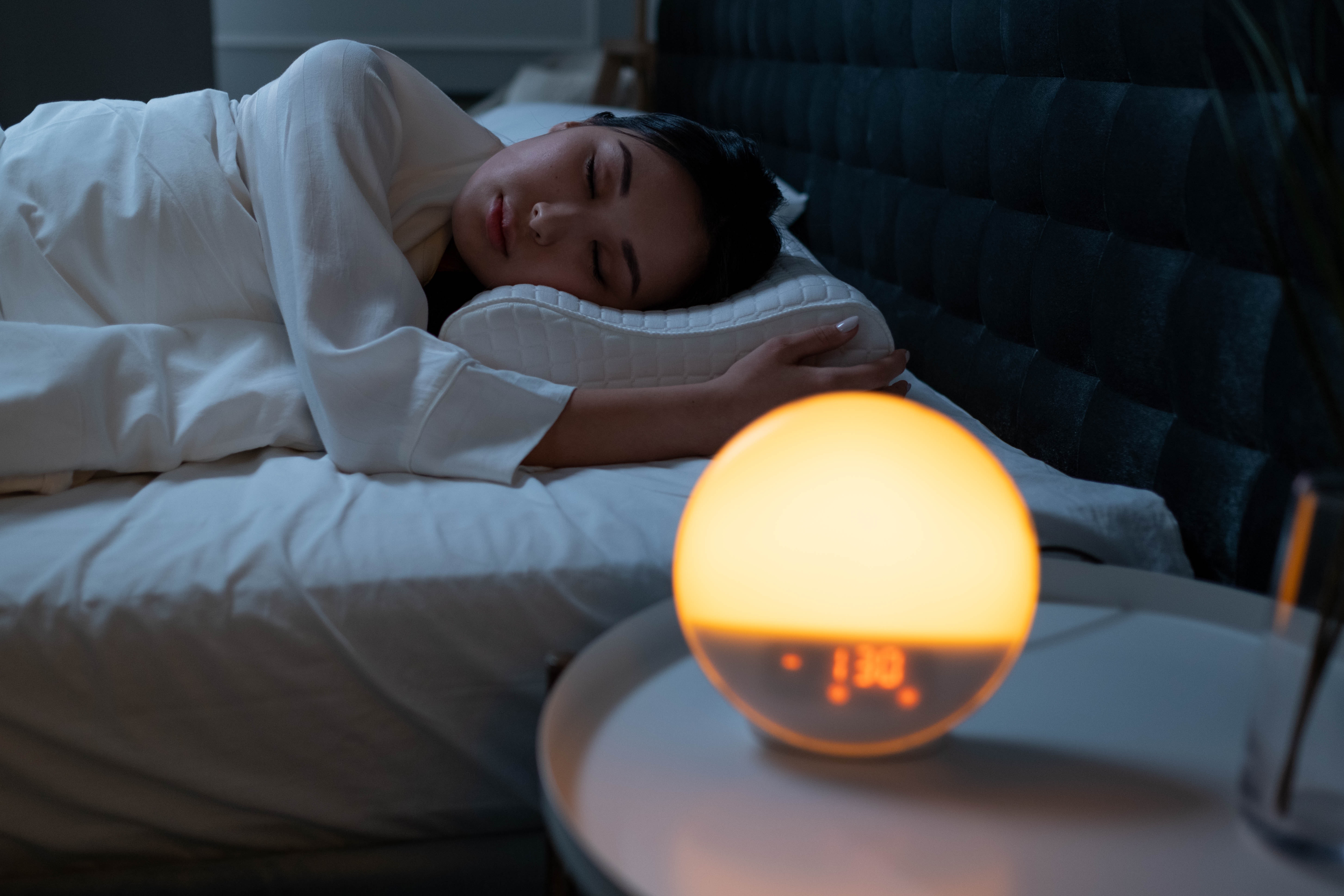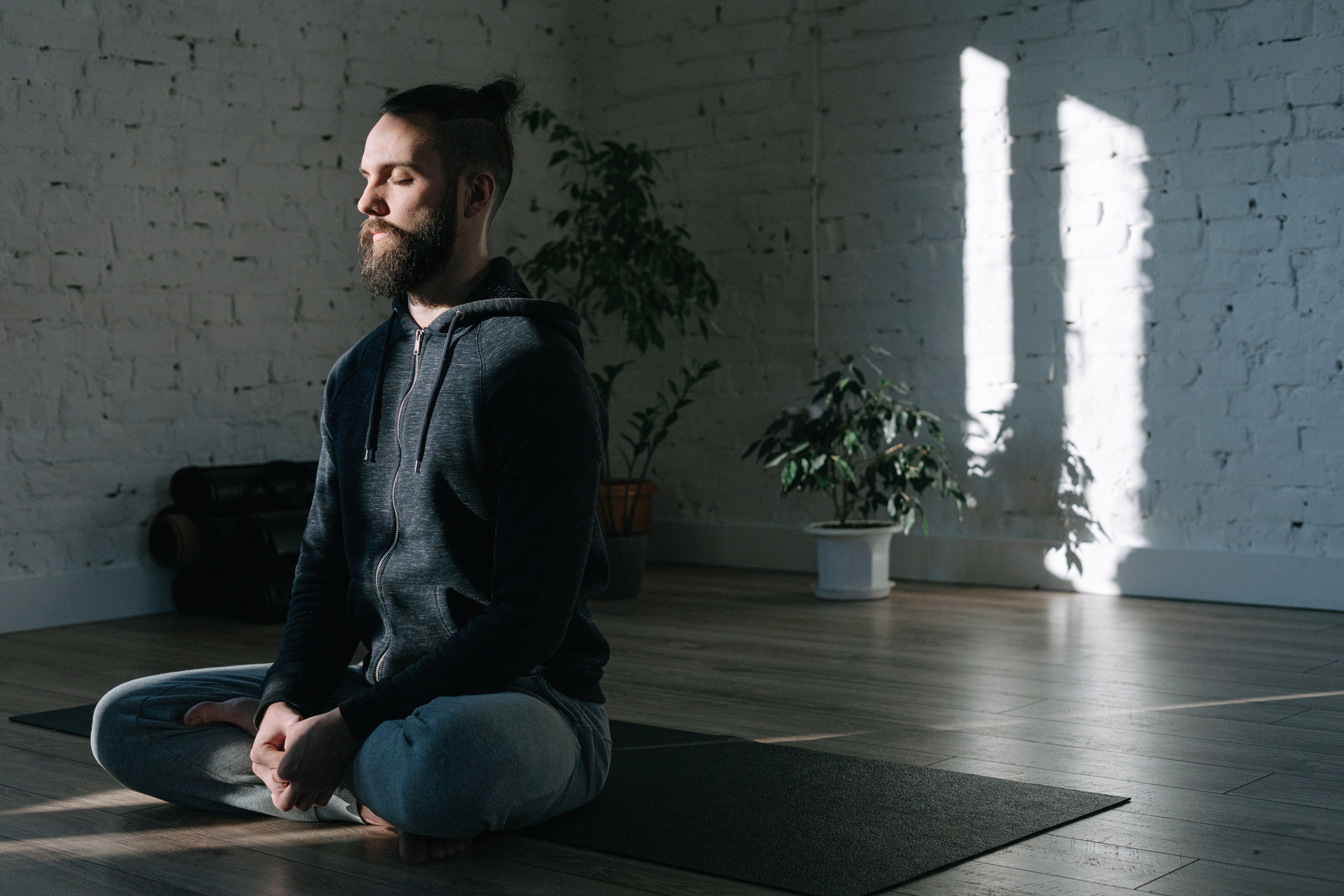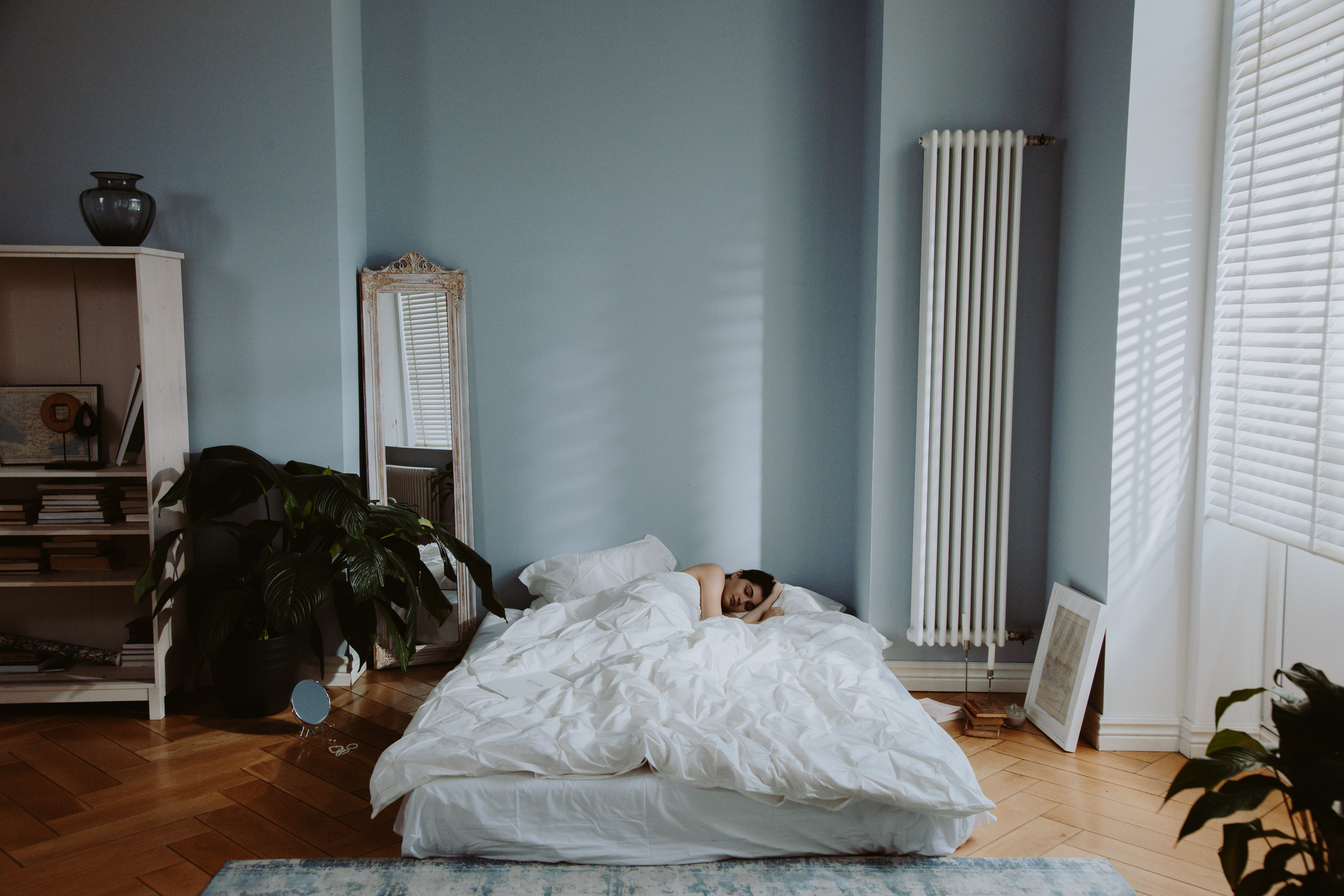In our fast-paced and stress-ridden world, achieving a good night's sleep can sometimes feel like an elusive dream. Sleep meditation, a powerful technique rooted in ancient practices, has gained significant popularity in recent years for its ability to promote relaxation, ease anxiety, and improve the quality of sleep. In this comprehensive guide, we will explore the benefits, techniques, and tips to help you incorporate sleep meditation into your nightly routine for a rejuvenating and restorative slumber .
- Understanding Sleep Meditation
1.1 What is Sleep Meditation?
Sleep meditation is a practice that involves calming the mind and body to achieve a state of deep relaxation conducive to sleep. It combines elements of meditation and mindfulness to quiet mental chatter, reducing stress, and promoting restful sleep.1.2 How Does Sleep Meditation Work?
Sleep meditation works by directing your focus away from racing thoughts and external distractions, allowing you to enter a state of calm and relaxation. By engaging in specific meditation techniques, you can quiet your mind, release tension from your body, and create an optimal environment for sleep.1.3 The Benefits of Sleep Meditation
- Improved Sleep Quality: Sleep meditation helps regulate sleep patterns, enhances sleep duration, and promotes deeper and more restorative sleep.
- Reduced Stress and Anxiety: By calming the mind and relaxing the body, sleep meditation reduces stress and anxiety levels, leading to a more peaceful and tranquil state of mind before sleep.
- Enhanced Relaxation: Engaging in sleep meditation before bed helps release physical and mental tension, enabling you to unwind and prepare for sleep.
- Increased Mindfulness: Sleep meditation cultivates a sense of present-moment awareness, allowing you to be fully immersed in the sensations of the present and letting go of thoughts that might hinder sleep.
- Improved Overall Well-being: Consistent sleep meditation practice can positively impact your overall well-being by reducing insomnia, improving mood, boosting concentration, and increasing self-awareness.
- Getting Started with Sleep Meditation
2.1 Creating a Sleep-Friendly Environment
Ensure your sleep environment is conducive to relaxation and free from distractions. Dim the lights, minimize noise, and maintain a comfortable temperature in your bedroom. Consider using earplugs, an eye mask, or white noise machines to further enhance the sleep-friendly ambiance.2.2 Preparing Your Mind and Body
Prioritize winding down before bed by engaging in activities that promote relaxation. Avoid stimulating substances like caffeine or electronics that emit blue light. Instead, opt for soothing rituals such as taking a warm bath, reading a book, practicing gentle stretches, or listening to calming music.2.3 Setting Intentions for Your Meditation Practice
Before beginning your sleep meditation, set a clear intention. Focus on your desire for deep rest and peaceful sleep. Visualize yourself letting go of the day's worries and embracing a state of tranquility. This intention will guide your meditation practice and help align your mind with your sleep goals.3.1 Guided Sleep Meditation
Guided sleep meditation involves listening to a recorded meditation or using a meditation app that provides verbal guidance throughout the practice. These guided sessions typically focus on relaxation techniques, visualization, and breathing exercises to calm the mind and body. They can be especially beneficial for beginners or those who prefer structured guidance during their meditation practice.3.2 Body Scan Meditation
Body scan meditation involves systematically bringing awareness to different parts of the body, starting from the toes and moving upward. By focusing on each body part, you can release tension and promote relaxation. This technique cultivates a sense of body-mind connection and encourages a state of deep relaxation, which is ideal for preparing for sleep.3.3 Breathing Techniques for Sleep
Various breathing techniques can help induce a state of calm and relaxation, making them ideal for sleep meditation. Deep diaphragmatic breathing, alternate nostril breathing, or the 4-7-8 breathing technique can all be effective in soothing the nervous system, slowing down the heart rate, and preparing the body for restful sleep.3.4 Visualization Meditation
Visualization meditation involves creating and focusing on calming mental images. During sleep meditation, you can visualize serene natural settings, peaceful scenes, or gentle elements that evoke a sense of tranquility. This technique helps divert attention away from stressful thoughts and induces a relaxed state conducive to sleep.3.5 Mantra Meditation
Mantra meditation involves the repetition of a calming word, sound, or phrase (mantra). You can choose a soothing mantra such as "peace," "calm," or "relax" and silently repeat it to yourself during your sleep meditation practice. The rhythmic repetition of the mantra helps quiet the mind, deepen relaxation, and promote sleep.4.1 Choosing the Right Time for Sleep Meditation
Choosing the right time for sleep meditation is crucial to maximize its effectiveness. Here are some considerations to keep in mind:Prioritize consistency: Try to establish a consistent bedtime routine that includes sleep meditation. This helps signal to your body that it's time to wind down and prepare for sleep.
Find a time that works for you: Experiment with different times to meditate before bed and observe how it affects your sleep. Some people prefer to meditate right before sleep, while others find it helpful to meditate 30 minutes to an hour before bedtime.
Avoid heavy meals and stimulants: It's generally recommended to avoid heavy meals and stimulants like caffeine or nicotine close to bedtime, as they can interfere with your ability to relax and fall asleep. Plan your sleep meditation practice accordingly.
Consider your energy levels: Pay attention to your energy levels throughout the day. If you find yourself feeling more alert and focused in the evening, that might be an ideal time for your sleep meditation practice. However, if you tend to feel sleepy earlier in the evening, you might want to consider meditating earlier.
4.2 Designing Your Personalized Meditation Routine
Designing a personalized sleep meditation routine allows you to tailor the practice to your preferences and needs. Here are some steps to help you create your routine:
Choose a meditation style: There are various meditation styles you can explore, such as guided meditation, body scan meditation, mindfulness meditation, or loving-kindness meditation. Experiment with different styles to find what resonates with you.
Set a duration: Decide how long you want your sleep meditation sessions to be. It can range from a few minutes to half an hour or more. Start with a duration that feels comfortable for you and gradually increase it as you become more accustomed to the practice.
Create a comfortable environment: Find a quiet and comfortable space where you can practice your sleep meditation. Consider using pillows, blankets, or a meditation cushion to support your posture and make the environment cozy.
Set the mood: Use calming elements to create a serene atmosphere. You can play soft instrumental music, use essential oils, dim the lights, or light a candle. Experiment with different sensory cues to enhance relaxation and tranquility.
Establish a routine: Incorporate your sleep meditation into a consistent bedtime routine. This helps signal to your mind and body that it's time to unwind and prepare for sleep. For example, you can start by dimming the lights, practicing some gentle stretching, and then transitioning into your meditation practice.
4.3 Incorporating Meditation into Your Evening Rituals
Incorporating sleep meditation into your evening rituals can help you transition from the busyness of the day to a state of relaxation and calm. Here are some suggestions:Disconnect from screens: Limit your exposure to electronic devices, such as smartphones, tablets, and laptops, especially in the hour leading up to bedtime. The blue light emitted by screens can interfere with your sleep quality. Instead, engage in activities that promote relaxation, such as reading a book, taking a warm bath, or journaling.
Practice gentle movement: Engage in gentle stretching or yoga poses to release tension in your body. This can help prepare your body for relaxation and improve your comfort during sleep.
Practice deep breathing: Incorporate deep breathing exercises into your evening rituals. Deep breathing activates the relaxation response in your body and helps calm your mind. You can try diaphragmatic breathing, where you focus on breathing deeply into your abdomen rather than shallow chest breathing.
Write in a gratitude journal: Take a few minutes before bed to write down things you are grateful for. Cultivating gratitude can shift your mindset to a positive state and promote feelings of contentment and peace.
Avoid stimulating activities: Engaging in stimulating activities, such as intense exercise, heated discussions, or work-related tasks, close to bedtime can make it more difficult to relax and fall asleep. Instead, choose activities that promote relaxation and calmness.
5.1 Finding the Ideal Meditation Position
Finding the ideal meditation position is important to ensure comfort and relaxation during your sleep meditation practice. Here are some tips to help you find a comfortable position:Sitting position: Sit on a cushion or a comfortable chair with your back straight but relaxed. Keep your shoulders relaxed and allow your hands to rest comfortably on your lap or thighs.
Lying down position: If you prefer to lie down for sleep meditation, choose a position that keeps your spine aligned. You can lie flat on your back or use a supportive pillow or bolster under your knees to relieve any tension in your lower back.
Experiment with variations: Feel free to experiment with different positions to find what works best for you. Some people find sitting cross-legged on a cushion or using a meditation bench helpful, while others prefer reclining in a zero-gravity chair or using a comfortable recliner.
Remember, the key is to find a position that allows you to be both relaxed and alert. Avoid positions that cause discomfort or excessive drowsiness, as you want to maintain a balance between relaxation and wakefulness during sleep meditation.
5.2 Using Meditation Apps and Resources
Meditation apps and resources can be valuable tools to support your sleep meditation practice. Here are some ways you can make use of them:
Guided meditation: Many meditation apps offer guided sleep meditations specifically designed to help you relax and fall asleep. These guided sessions provide verbal instructions and calming cues to guide you through the meditation process. They can be especially helpful for beginners or those who prefer structured guidance.
Timer and ambient sounds: Meditation apps often include features like timers and ambient sounds. You can set a timer to ensure you don't go over or under your desired meditation duration. Ambient sounds, such as gentle nature sounds or soothing music, can create a peaceful atmosphere for your sleep meditation practice.
Meditation communities: Some apps provide access to meditation communities or forums where you can connect with like-minded individuals, ask questions, and share experiences. This sense of community can provide support and motivation as you develop your sleep meditation routine.
Online resources: Apart from apps, there are numerous websites, podcasts, and YouTube channels that offer sleep meditation recordings and resources. Explore different platforms and find the ones that resonate with you.
Remember to choose reputable and reliable sources for your sleep meditation resources. Read reviews, try out free trials or samples, and see which ones align with your preferences and needs.
5.3 Dealing with Common Challenges
During your sleep meditation practice, you may encounter common challenges. Here are some tips to help you navigate them:
Restless thoughts: It's common for thoughts to arise during meditation. Instead of fighting or engaging with them, try observing them without judgment and gently redirect your focus back to your breath, body sensations, or meditation guidance. Remember, the goal is not to eliminate thoughts but to cultivate a calm and focused state of mind.
Physical discomfort: If you experience physical discomfort during sleep meditation, make adjustments as needed. Shift your position, use additional cushions or props for support, or try a different meditation posture. The key is to find a position that allows you to be both comfortable and alert.
Difficulty relaxing: If you find it challenging to relax during sleep meditation, incorporate relaxation techniques such as progressive muscle relaxation or body scan meditation. These practices involve systematically releasing tension in different parts of your body, helping you enter a state of deep relaxation.
Falling asleep: It's common to feel drowsy during sleep meditation, especially if you're practicing close to bedtime. If you find yourself drifting off to sleep, you can try meditating in a seated position or adjusting the timing of your practice to earlier in the evening. However, if your intention is to use sleep meditation as a tool to fall asleep, it's perfectly fine to allow yourself to drift off into sleep.
5.4 Combining Sleep Meditation with Other Relaxation Techniques
To enhance the effectiveness of your sleep meditation practice, you can combine it with other relaxation techniques. Here are a few examples:
Deep breathing exercises: Incorporate deep breathing exercises before or during your sleep meditation practice. Deep breathing helps activate the relaxation response in your body and can deepen your state of relaxation.
Progressive muscle relaxation: Practice progressive muscle relaxation before sleep meditation. This technique involves tensing and then releasing different muscle groups, promoting relaxation and tension release throughout your body.
Visualization: Combine visualization techniques with your sleep meditation practice. Imagine yourself in a peaceful, serene environment, such as a beach or a lush forest. Engaging your senses in the visualization can deepen your relaxation and create a more immersive experience.
Mindfulness in daily life: Extend your mindfulness practice beyond sleep meditation. Incorporate moments of mindfulness throughout your day by paying attention to your breath, your senses, or the present moment. This cultivates a sense of calm and can positively impact your sleep.
Remember, the goal is to find a combination of techniques that works best for you. Experiment with different relaxation techniques and observe how they complement your sleep meditation practice and contribute to your overall relaxation and well-being.
6.1 Optimizing Your Bedroom for Sleep
Creating a sleep-friendly environment in your bedroom can significantly enhance the quality of your sleep. Here are some tips to optimize your sleep environment:
Keep it dark: Use blackout curtains or blinds to minimize outside light and create a dark environment that promotes melatonin production, the hormone responsible for regulating sleep.
Maintain a comfortable temperature: Keep your bedroom at a cool, comfortable temperature. The ideal temperature for sleep varies for each person, but it generally falls between 60-67°F (15-19°C).
Invest in a supportive mattress and pillows: Your mattress and pillows play a crucial role in providing comfort and support for a good night's sleep. Choose a mattress and pillows that align with your preferences and provide adequate support for your body.
Declutter your space: Remove any unnecessary clutter from your bedroom to create a clean and organized environment. A clutter-free space promotes a sense of calm and relaxation, allowing you to unwind more easily.
6.2 Creating a Soothing Bedtime Routine
Establishing a soothing bedtime routine can help signal to your body that it's time to wind down and prepare for sleep. Here are some tips for creating a calming bedtime routine:
Consistency is key: Try to follow a consistent bedtime routine every night, including weekends. Going to bed and waking up at consistent times helps regulate your internal body clock and promotes better sleep quality.
Disconnect from electronic devices: Turn off electronic devices, such as smartphones, tablets, and TVs, at least 30 minutes before bed. The blue light emitted by these devices can interfere with your natural sleep-wake cycle. Instead, engage in relaxing activities like reading a book or listening to soft music.
Dim the lights: Lower the lights in your bedroom as you prepare for bed. Dim lighting signals to your brain that it's time to relax and encourages the release of melatonin.
Engage in relaxation techniques: Incorporate relaxation techniques, such as deep breathing exercises, gentle stretching, or meditation, into your bedtime routine. These practices can help calm your mind and relax your body, setting the stage for a restful sleep.
6.3 Reducing Noise and Disturbances
Noise and disturbances can disrupt your sleep and prevent you from reaching deep, restorative sleep stages. Here are some strategies to reduce noise and disturbances in your sleep environment:
Use earplugs or white noise machines: If you're sensitive to noise, consider using earplugs or white noise machines to block out external sounds. White noise machines emit a consistent sound that can help mask disruptive noises and promote better sleep.
Address sources of noise: Identify and address any sources of noise in your bedroom or outside your window. This may involve fixing squeaky doors, using rugs or curtains to absorb sound, or using a fan to create gentle background noise.
Communicate with your household members: If you share your living space with others, communicate your sleep needs and preferences to ensure a quiet environment during your designated sleep hours.
Consider soundproofing: If the noise remains a persistent issue, you may explore soundproofing options such as adding soundproof curtains, using soundproofing panels on the walls, or installing weatherstripping to minimize sound transmission.
6.4 The Role of Lighting in Sleep Quality
Lighting plays a crucial role in regulating your sleep-wake cycle. Here's how you can optimize lighting in your sleep environment:
Maximize natural light exposure: Expose yourself to natural light during the day, especially in the morning. Natural light helps regulate your circadian rhythm and promotes alertness during the day.
Dim the lights in the evening: As bedtime approaches, start dimming the lights in your home to signal to your body that it's time to wind down. Use low-wattage bulbs or dimmers to create a soft, soothing ambiance in your bedroom.
Minimize blue light exposure: Avoid exposure to bright screens and blue light from electronic devices, such as smartphones and tablets, before bed. Blue light suppresses melatonin production, making it harder to fall asleep. If needed, use blue light filters or enable night mode on your devices.
Use warm-colored light sources: In your bedroom, opt for warm-colored or amber-hued light bulbs, as they create a more relaxing and sleep-inducing atmosphere compared to bright, cool-toned lights.
By optimizing your sleep environment through the darkness, comfort, a soothing bedtime routine, noise reduction, and appropriate lighting, you can create an atmosphere that promotes deep, restful sleep and supports your sleep meditation practice.
FAQs
Can Sleep Meditation Cure Insomnia?
Sleep meditation can be a helpful tool for managing insomnia, but it's important to note that it may not cure insomnia on its own. Insomnia is a complex sleep disorder that can have various underlying causes. Sleep meditation can aid in relaxation, reducing stress, and promoting a calm state of mind, which can improve sleep quality. However, it's recommended to consult with a healthcare professional for a comprehensive evaluation and to explore other treatment options if you are struggling with chronic insomnia.
How Long Does It Take to Experience the Benefits of Sleep Meditation?
The time it takes to experience the benefits of sleep meditation can vary from person to person. Some individuals may notice positive effects after just a few sessions, while for others, it may take more time and consistent practice. It's important to approach sleep meditation with patience and an open mind. Consistency is key, so committing to a regular practice can enhance the effectiveness of sleep meditation and lead to more noticeable benefits over time.
Can Sleep Meditation Help with Lucid Dreaming?
Sleep meditation can potentially contribute to lucid dreaming, which is the state of being aware that you are dreaming while you are still in the dream. By promoting relaxation, mindfulness, and self-awareness, sleep meditation may increase the likelihood of becoming lucid during a dream. However, lucid dreaming is a skill that requires practice and dedication. If you're interested in exploring lucid dreaming, you may consider incorporating specific techniques and approaches designed for lucid dream induction, in addition to sleep meditation.
Is It Safe for Everyone to Practice Sleep Meditation?
In general, sleep meditation is considered safe for most individuals. However, there are a few exceptions to consider:
Sleep disorders: If you have a diagnosed sleep disorder or any specific sleep-related concerns, it's advisable to consult with a healthcare professional before starting a sleep meditation practice. They can provide personalized guidance and ensure that sleep meditation is appropriate for your condition.
Mental health conditions: If you have a mental health condition or are under the care of a mental health professional, it's important to discuss incorporating sleep meditation into your routine with them. While meditation can be beneficial for mental well-being, it's important to ensure it aligns with your treatment plan and any specific considerations related to your mental health.
Certain medical conditions: If you have any medical conditions or physical limitations, it's advisable to consult with your healthcare provider before starting sleep meditation. They can provide guidance on modifications or alternative techniques that may be more suitable for you.



















0 Comments